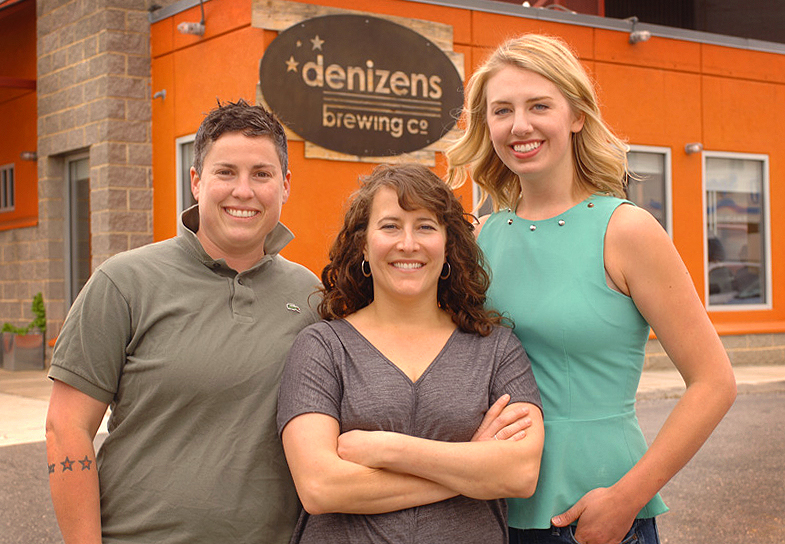WASHINGTON — If you wanted to break into the food industry 20 years ago, your options were limited. For the most part, working in the culinary arts meant your suit was a white coat and your office, a kitchen.
That is no longer the case. Today the field embodies everything from preserving to photography, and from distilling to digital media. Its growth has ushered in an era where chefs are celebrities, breakfast foods are a trend and anything “craft” trumps everything conventional.
And along with creative carbs and re-imagined cocktails, the industry’s evolution has given more opportunities for women to succeed in a historically male-dominated business.
“Being a restaurateur, being a food entrepreneur, doesn’t necessarily mean you just need to be a chef,” said Gail Simmons, a food writer and judge on Bravo’s Emmy-winning series “Top Chef.”
“Working in the food world can mean 10,000 things.”
Simmons says it’s no surprise that the restaurant world was — and still is — predominantly male. It’s biological.
Restaurants are open evenings, weekends and holidays, making the job difficult for women who want to have a family.
“It’s very hard to nurse a baby and to work seven nights a week out of the house,” Simmons said.
Now, women who want to pursue a career in food have options — many of which come with nine-to-five schedules or no schedule at all.
“Because the food industry now means so many different things, it has opened up so many avenues for women. And I think it will continue to do so,” said Simmons, 40.
Simmons is a product-of-sorts of the industry’s progression.
The daughter of a food journalist and “a phenomenal cook,” she found herself drawn to food writing after college.
“I was interested in that window into the world of food that most people didn’t see. And the more time I spent in restaurants, the more I loved it. I wanted to parlay that by the written word,” said Simmons, a McGill University graduate.
She landed internships at newspapers and magazines, where she offered help to the publications’ food critics. However, she quickly learned that those jobs were few and far between.
“This was at a time when food writing and food media meant a very narrow field,” she said.
At the advice of an editor, Simmons traded her pen for a pan and went to culinary school to learn more about the craft that she so deeply loved. Then, she worked as a line cook in several New York restaurants, knowing full well she never wanted to be a chef.
“But that I wanted to understand the language of the kitchen, the skills involved, the work involved and the minds of chefs so that I could write about it with authority,” she said.
When she felt like she had enough experience under her belt, Simmons returned to writing, first at Vogue and then at Food & Wine. It was there, about a year into her role, where she was offered the opportunity of a lifetime — one that had a profound impact on the world of food as we now know it.
The cable network Bravo wanted to produce a reality show starring chefs and they wanted Simmons to be a judge. At the time, there was nothing like that on TV, so Simmons agreed, albeit with some hesitation.
“We didn’t know if we would be laughed off the stage, so to speak. We were worried that no one would watch it — or worse, that our peers would laugh at us,” Simmons said. “It was a really ballsy move by Bravo and Food & Wine … to create this show about real professional chefs and the world of cooking and make it in a competition style.”
Viewers didn’t laugh — they cheered. Now, with 13 seasons and multiple Emmy nominations, “Top Chef” is one of the most popular shows on television and Simmons is the face of its success.
“I think we speak true to the industry; we address real issues in the industry, real-life scenarios … and because of that, I think we’ve changed not only the language of food and the way that Americans talk about food and talk about going out and their knowledge of the food industry and restaurants and reading menus and cooking at home,” she said.
With a multimillion-viewer platform, Simmons is focused on empowering other women — both in and out of the kitchen. On Monday, Dec. 12, she will be in D.C. to host the annual JWI Women to Watch luncheon at the Marriott Wardman Park, which honors 10 women who are leaders in their communities.
These role models, Simmons says, are essential to shaping future generations.
“I think that by finding strong role models and modeling the quality of your work after them, you’re sure to succeed,” she said.
And her best advice for those who want to shatter the already cracked glass ceiling of the food industry?
“You can’t cheat it; you can’t take shortcuts … Take the time to really understand cooking and what you love about it, because that will always allow you to be an equal at the table.”
Tickets for the Women to Watch luncheon are available on JWI’s website.






